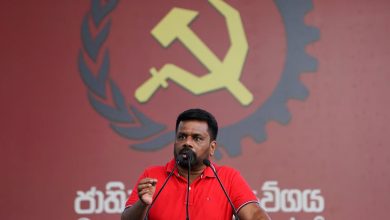COVID-19 WILL HIT SOUTH ASIA HARD. WE ARE FIGHTING BACK
While my regular rounds of visits to South Asia have ground to a halt, I have never felt more connected to the region. I’m reminded every day that the unfolding COVID-19 crisis threatens to erase the development gains we fought so hard to achieve.
South Asia will be hit hard as COVID-19 strikes
True, the scale of the deadly epidemic across South Asia seems smaller compared to Western countries: India, the world’s second-most populous country, reported 1,860 active cases as of today; Nepal has recorded zero official deaths. But since testing is limited, these numbers do not reflect the full extent of the crisis.
The worst is yet to come. In India alone, millions of migrant workers are spilling out of cities, spiking fear they’ll carry the infection back to their villages; hundreds of millions of informal workers are left without a job and are at risk of starving.
We will announce our growth projections for South Asia on April 12, along with policy recommendations to manage the economic and health impacts of the pandemic.
As it continues to spread, COVID-19 is triggering an economic fallout that will drive millions into poverty and further increase inequality.
Should the virus hit a relative or loved one, many will be struggling to afford adequate treatment and medications—a chilling prospect considering that an estimated 60 million South Asians already fall into poverty each year because of high out-of-pocket health costs.
Rolling out $1.4 billion in emergency support for South Asia
Of that support, more than $1.4 billion will help governments across South Asia respond to the immediate health consequences of the pandemic and protect their people.
Unprecedented times call for fast action: It took a mere two weeks to prepare COVID-19 support packages for Afghanistan, Pakistan, Maldives, India, and Sri Lanka. Financing for Bangladesh, Bhutan, and Nepal is on a fast track and will be coming soon.
Last week, our team joined by phone finance ministers and central bank governors from South Asian countries as well as our partners to discuss the pandemic’s impact and calibrate our support to strengthen countries’ ability to act quickly.
Crucial to our approach is constant coordination with finance ministers and government officials from the region to ensure support is tailored to country circumstances.

As it turns out, these testing times have also provided new opportunities for South Asian countries to join forces, strengthen regional institutions, and pool resources to fight a deadly pandemic that knows no borders and spreads indiscriminately through communities.
It will cover all Indian states and union territories and address the needs of infected people, at-risk populations, medical and emergency personnel, and service providers, and medical and testing facilities.
This involves turning hospital beds into intensive care units and purchasing personal protective equipment, ventilators, and medicines, particularly in district hospitals and designated infectious disease hospitals.
for children, so they don’t stop learning during school closures.
While the duration and impact of the pandemic are difficult to measure, our broader economic program could provide up to $160 billion globally over the next 15 months
The COVID-19 situation in Afghanistan is quickly evolving as the country shares a porous border with Iran, which has a large and growing outbreak with serious transmission implications.
Farther south, This support will also raise public awareness about handwashing, hygiene, and social distancing.
Altogether, this urgent support will mitigate some of the immediate impacts of COVID-19 and strengthen countries’ responses. And while the duration and impact of the pandemic are difficult to measure, our broader economic program could provide up to $160 billion globally over the next 15 months to further protect the poor and vulnerable, support businesses, and bolster economic recovery.






